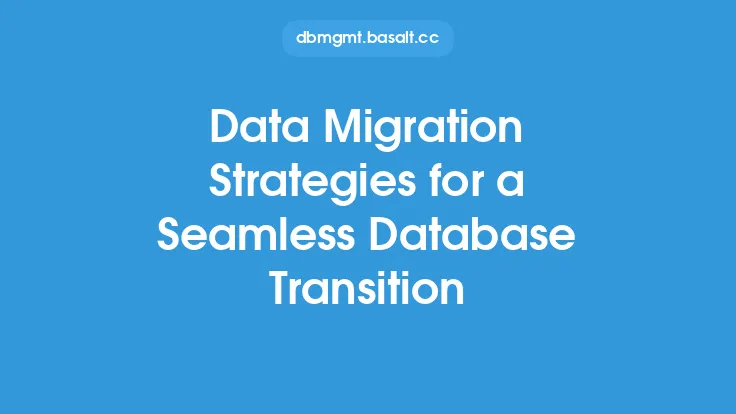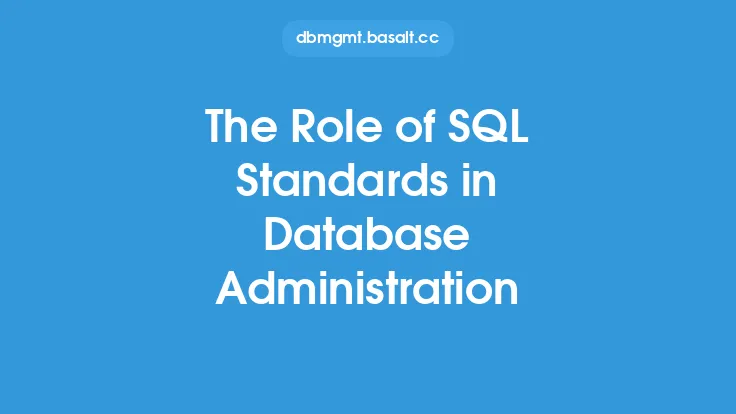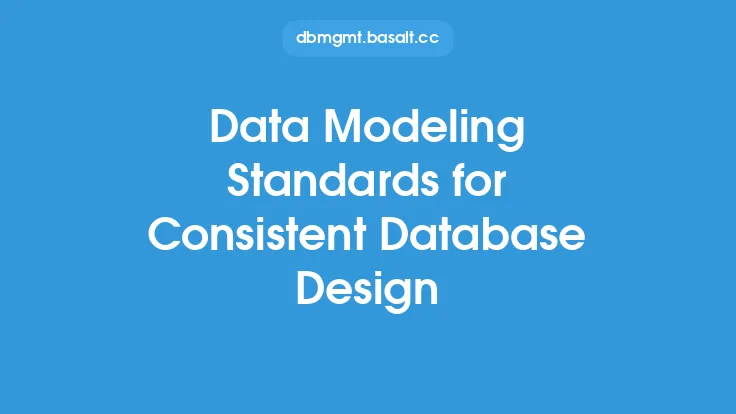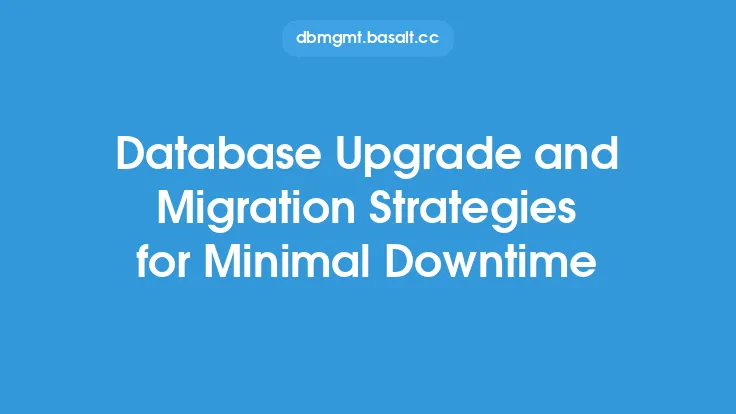Database portability is a critical aspect of database administration, as it enables the seamless migration of databases between different platforms, systems, and environments. This is made possible by database standards, which provide a common framework for database design, development, and deployment. In this article, we will explore the concept of database portability, its importance, and how standards enable seamless migration.
Introduction to Database Portability
Database portability refers to the ability of a database to be easily transferred or migrated from one platform or system to another, without requiring significant modifications or rework. This is essential in today's fast-paced and ever-changing IT landscape, where organizations need to adapt quickly to new technologies, platforms, and business requirements. Database portability ensures that databases can be easily moved between different environments, such as from on-premises to cloud, or from one cloud provider to another, without disrupting business operations or compromising data integrity.
Benefits of Database Portability
The benefits of database portability are numerous and significant. Some of the key advantages include:
- Reduced costs: Database portability eliminates the need for costly rework or redevelopment of databases when migrating to a new platform or system.
- Increased flexibility: Portable databases can be easily moved between different environments, allowing organizations to respond quickly to changing business requirements.
- Improved scalability: Database portability enables organizations to scale their databases up or down as needed, without being tied to a specific platform or system.
- Enhanced data integrity: Portable databases ensure that data is preserved and protected during migration, reducing the risk of data loss or corruption.
Role of Standards in Database Portability
Database standards play a critical role in enabling database portability. Standards provide a common framework for database design, development, and deployment, ensuring that databases are compatible with different platforms and systems. Some of the key standards that enable database portability include:
- SQL (Structured Query Language) standards: SQL is a standard language for managing relational databases, and its widespread adoption ensures that databases can be easily migrated between different platforms and systems.
- ODBC (Open Database Connectivity) standards: ODBC is a standard interface for accessing databases, and its adoption ensures that databases can be easily connected to and accessed from different applications and platforms.
- JDBC (Java Database Connectivity) standards: JDBC is a standard interface for accessing databases from Java applications, and its adoption ensures that databases can be easily integrated with Java-based systems and platforms.
Technical Aspects of Database Portability
From a technical perspective, database portability requires careful consideration of several factors, including:
- Database schema: The database schema defines the structure and organization of the database, and must be compatible with the target platform or system.
- Data types: Data types must be compatible between the source and target platforms or systems, to ensure that data is preserved and protected during migration.
- SQL syntax: SQL syntax must be compatible between the source and target platforms or systems, to ensure that database queries and operations can be executed correctly.
- Database connectivity: Database connectivity must be established between the source and target platforms or systems, to enable data transfer and migration.
Best Practices for Achieving Database Portability
To achieve database portability, organizations should follow several best practices, including:
- Use standard SQL syntax and data types to ensure compatibility between different platforms and systems.
- Use ODBC or JDBC interfaces to connect to databases, to ensure compatibility with different applications and platforms.
- Use database abstraction layers to decouple database code from the underlying platform or system, to enable easier migration and portability.
- Test and validate database portability regularly, to ensure that databases can be easily migrated between different environments.
Challenges and Limitations of Database Portability
While database portability offers numerous benefits, there are also several challenges and limitations to consider. Some of the key challenges include:
- Complexity: Database portability can be complex and time-consuming, requiring significant expertise and resources.
- Cost: Database portability can be costly, particularly if significant rework or redevelopment is required.
- Compatibility: Database portability requires careful consideration of compatibility issues, including database schema, data types, and SQL syntax.
- Performance: Database portability can impact performance, particularly if the target platform or system has different performance characteristics or optimization requirements.
Future of Database Portability
The future of database portability is closely tied to the evolution of database standards and technologies. Some of the key trends and developments that will shape the future of database portability include:
- Cloud computing: Cloud computing will continue to drive demand for database portability, as organizations seek to migrate databases to cloud-based platforms and systems.
- Big data and analytics: Big data and analytics will require new approaches to database portability, including the use of NoSQL databases and distributed data processing frameworks.
- Artificial intelligence and machine learning: Artificial intelligence and machine learning will require new approaches to database portability, including the use of specialized databases and data processing frameworks.
- Internet of Things (IoT): IoT will require new approaches to database portability, including the use of edge computing and real-time data processing frameworks.
Conclusion
In conclusion, database portability is a critical aspect of database administration, enabling the seamless migration of databases between different platforms, systems, and environments. Database standards, including SQL, ODBC, and JDBC, play a critical role in enabling database portability, by providing a common framework for database design, development, and deployment. By following best practices and considering technical aspects, organizations can achieve database portability and reap its numerous benefits, including reduced costs, increased flexibility, and improved scalability. As database technologies continue to evolve, database portability will remain a key consideration, driving innovation and adoption of new standards, technologies, and approaches.





